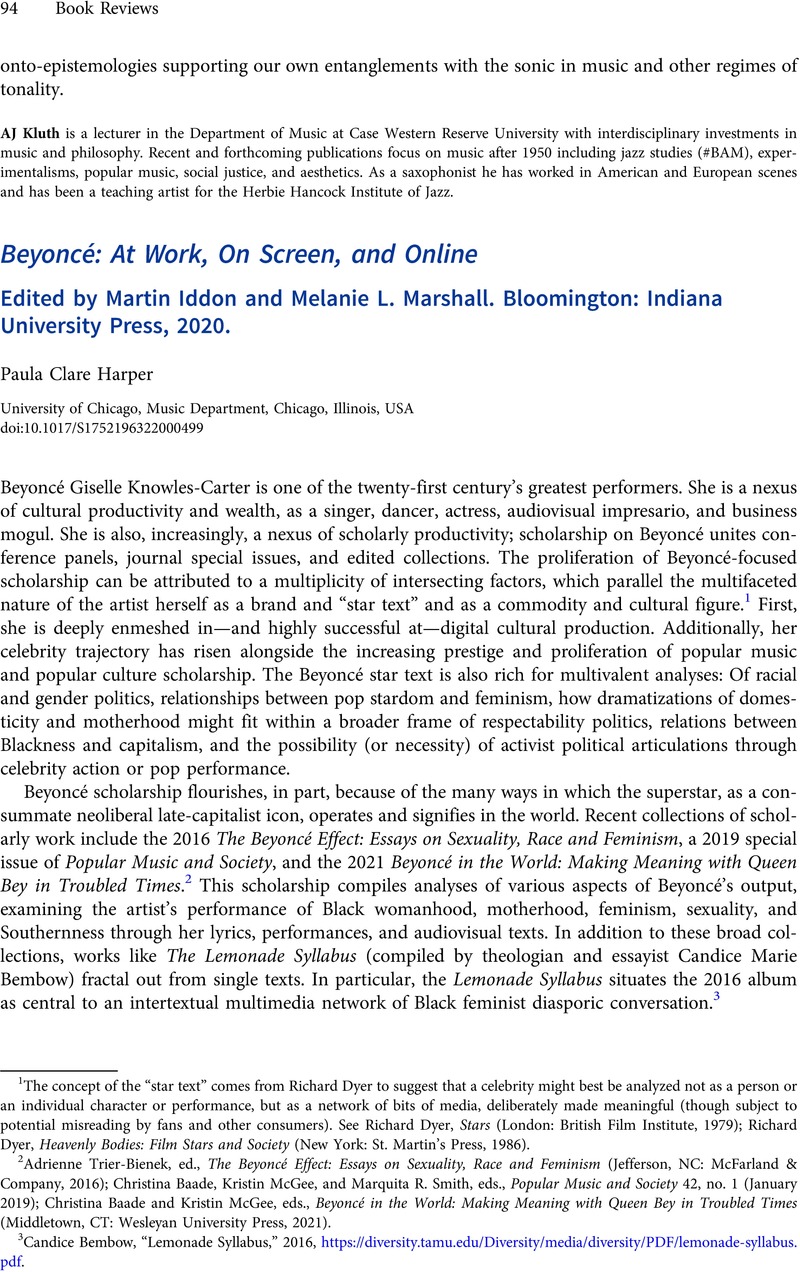No CrossRef data available.
Article contents
Beyoncé: At Work, On Screen, and Online Edited by Martin Iddon and Melanie L. Marshall. Bloomington: Indiana University Press, 2020.
Review products
Published online by Cambridge University Press: 03 February 2023
Abstract

- Type
- Book Review
- Information
- Copyright
- Copyright © The Author(s), 2023. Published by Cambridge University Press on behalf of the Society for American Music
References
1 The concept of the “star text” comes from Richard Dyer to suggest that a celebrity might best be analyzed not as a person or an individual character or performance, but as a network of bits of media, deliberately made meaningful (though subject to potential misreading by fans and other consumers). See Dyer, Richard, Stars (London: British Film Institute, 1979)Google Scholar; Dyer, Richard, Heavenly Bodies: Film Stars and Society (New York: St. Martin's Press, 1986)Google Scholar.
2 Trier-Bienek, Adrienne, ed., The Beyoncé Effect: Essays on Sexuality, Race and Feminism (Jefferson, NC: McFarland & Company, 2016)Google Scholar; Baade, Christina, McGee, Kristin, and Smith, Marquita R., eds., Popular Music and Society 42, no. 1 (January 2019)CrossRefGoogle Scholar; Baade, Christina and McGee, Kristin, eds., Beyoncé in the World: Making Meaning with Queen Bey in Troubled Times (Middletown, CT: Wesleyan University Press, 2021)Google Scholar.
3 Candice Bembow, “Lemonade Syllabus,” 2016, https://diversity.tamu.edu/Diversity/media/diversity/PDF/lemonade-syllabus.pdf.
4 Tinsley, Omise'eke Natasha, Beyoncé in Formation: Remixing Black Feminism (Austin: University of Texas Press, 2018)Google Scholar. This collection represents another valuable entry in the list of recent Beyoncé scholarly collections.


